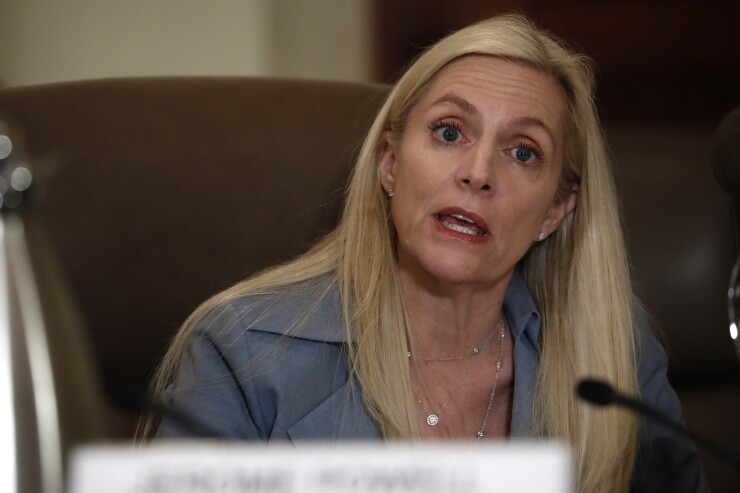The Federal Reserve is seeking public input as it wrestles with the question of how forcefully it should push to build a faster payment system that links all 11,000-plus U.S. banks and credit unions.
The central bank on Wednesday released a 47-page notice seeking comment on its own role in a future world of round-the-clock, immediate payments. The question is a delicate one for the Fed, in part because
The move comes at a time when the Fed is facing pressure to make decisions regarding faster payments. Real-time capabilities have long been in place in the U.K., Sweden and a host of other countries. In the U.S., payment apps like Venmo provide real-time notifications to users, but they do not provide all the benefits of a nationwide real-time system that connects every bank.

In a speech Wednesday in Chicago, Fed Gov. Lael Brainard warned that small institutions could be left behind if there is insufficient coordination in the development of faster U.S. payments.
“We can wait and watch how these issues evolve on their own. But this will likely result in a fragmented patchwork of systems that entails inefficiencies and risks and could leave behind many households, small businesses and smaller banks,” Brainard said, according to a transcript of her remarks.
Brainard also said that a real-time settlement service provided by the Fed’s regional banks “could significantly improve the prospect that banks of all sizes will have equitable access.”
In her speech, Brainard noted that the Fed has played key roles in various historical eras in the development of the U.S. payments system.
“Today, Americans take the reliability and safety of their payments for granted. But that was not always the case,” she said.
For several years, the Fed has been encouraging large banks, small banks, payment firms, technology companies, consumer advocacy groups and others to collaborate on the development of a modernized payment system — a relatively hands-off role compared to central banks in various other countries.
In July 2017, an industry-led group that was convened by the Fed
Small banks and credit unions called for the Fed to take a more active role in the operations of a modernized system, but that idea was not embraced by large institutions. The Clearing House, a payments company owned by the nation’s largest banks, is hoping smaller institutions will sign up for the real-time payments system that it launched in November 2017.
The Fed’s notice for public comment seeks input on potential actions that the Fed could take.
It mentions the possibility of two potential roles for the Fed and its regional banks: developing a real-time settlement service that operates 24 hours per day and 365 days per year, and creating a liquidity management tool that would help banks to settle payments around the clock.
The Fed emphasized in a press release Wednesday that it is not committed to taking any specific action. Comments from members of the public are due on Dec. 14.
Others in the government have urged the Fed to act, however.
In July, the Treasury Department released a report that encouraged the Fed to move quickly, and mentioned the possibility that the central bank might develop a real-time settlement service.
In August, Sen. Chris Van Hollen, D-Md., wrote to Federal Reserve Chairman Jerome Powell to lament what he characterized as the “continued delay” in implementing a real-time payment system.
“It is unacceptable that the United States continues to lag behind its peers in modernizing our payment system,” the Democratic senator wrote.
Van Hollen reiterated his concerns Tuesday during his questioning of Randal Quarles, the Fed’s vice chair for supervision, at a Senate Banking Committee hearing. He argued that lag times in the existing payment system — it can take several days for checks and online payments to be settled — are hurting consumers who live paycheck to paycheck and rack up overdraft fees as a result of processing delays.
Fed officials have made the same point in advocating for the adoption of a real-time system.
“Based on industry studies, we believe a primary benefit of real-time payments is the ability to make or receive time-sensitive payments quickly, at any time and on any day of the time,” the Fed stated in its response to Van Hollen’s letter.
“This benefit relates to managing family cash flow and could potentially accrue to families of all income ranges.”





